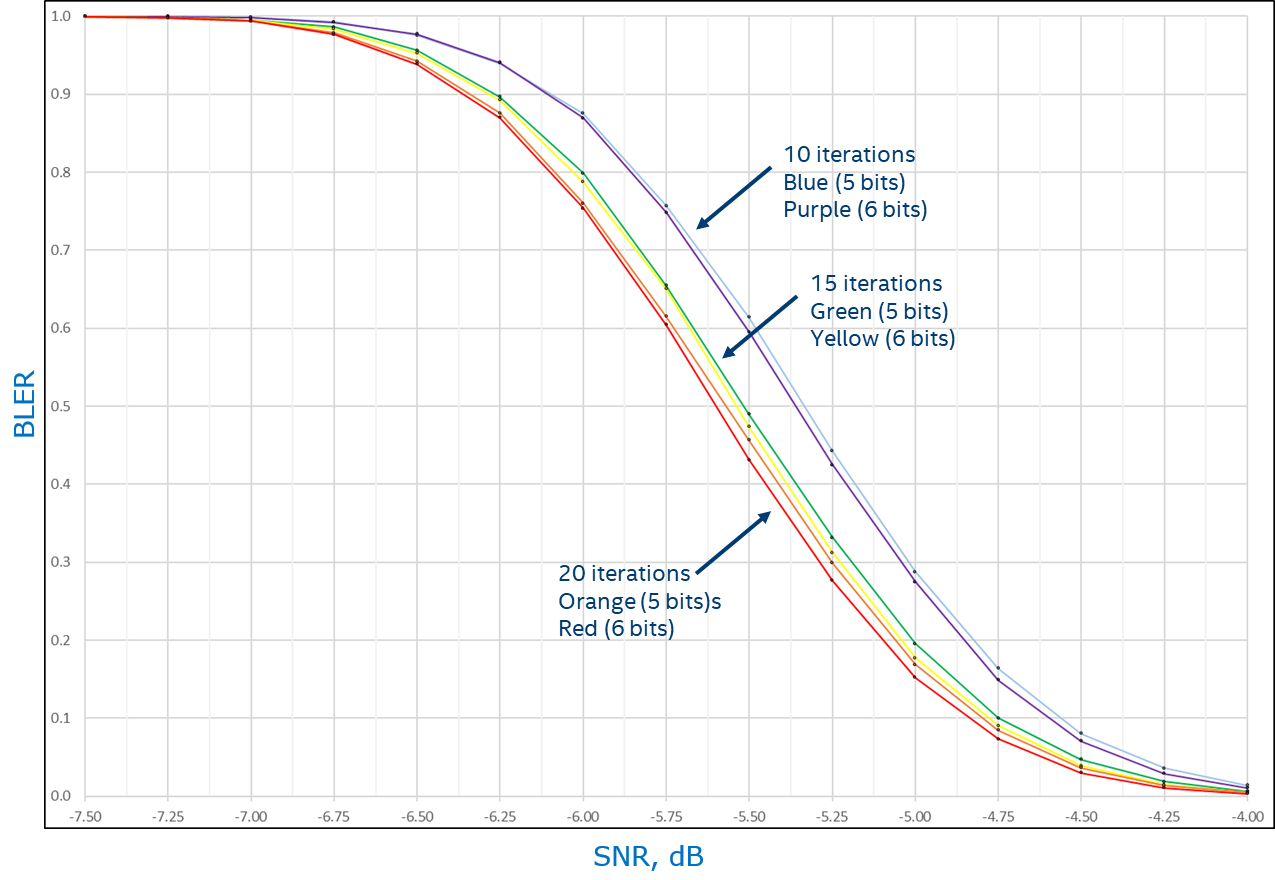5. Parameter Optimization for the 5G LDPC IP
For throughput vs BLER performance, you can limit the maximum number of iterations that the LDPC decoder uses before giving up on decoding the block. BLER improves with increasing the maximum number of iterations. However, you can potentially reduce the throughput if you raise this number too high. At some point, it is better to give up and request retransmission of a packet or to have the network reassign your LDPC parameters for the shared data channel. You can use the C++ or MATLAB software models, to perform this assessment and to determine which set of parameters suits the network best.



The vertical axis in both figures shows the block rate on the linear scale from 0 (no errors; that BLER is not theoretically attainable) to 1 (the error rate is 100%; the decoder fails to decode every dataword transmitted). The horizontal axis is in logarithmic units (dB) of the ratio between the power of the normalized modulated carrier and the effective power of the additive Gaussian noise in the channel, i.e. its variance.
A transmitted codeword can morph into another valid one, if it is sampled from a noisy channel and translated to LLR values. The LDPC decoder might assert source_et_pass and even close before it reaches the maximum number of iterations indicating a successful operation in those cases. However, the decoded dataword does not match the original transmission block. These occurrences are expected. The network should cure such situations by changing the LDPC parameters it is currently using to a set of more robust ones and using the hybrid automatic repeat request (HARQ) mechanism.